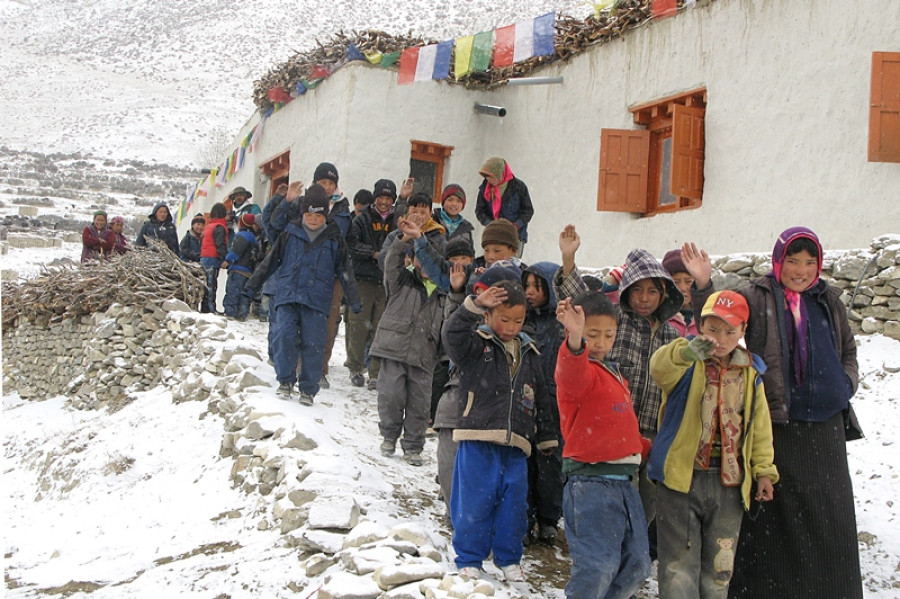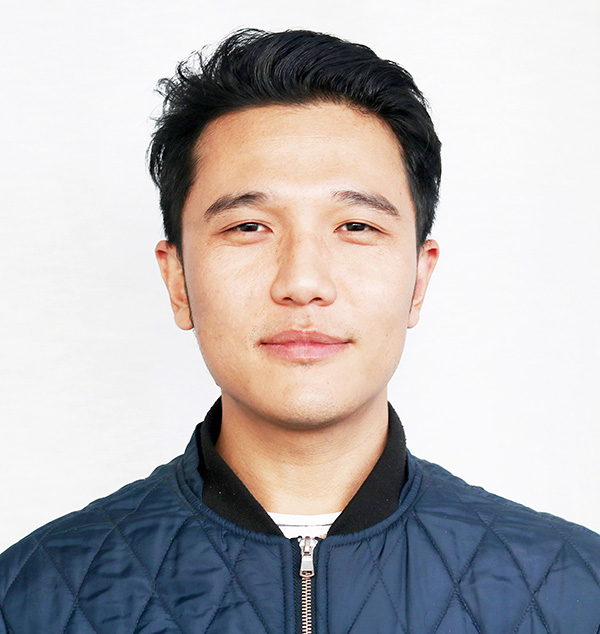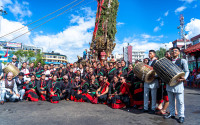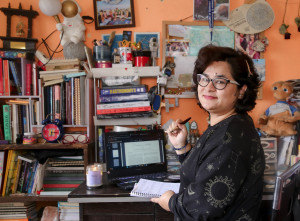Culture & Lifestyle
No school for the children of Upper Mustang this winter
All schools in the region, except one, have cancelled this year’s winter migration because of the pandemic, leaving many students with no choice but to stay back.
Tsering Ngodup Lama
Fifteen-year-old Ngodup Palmo spent the last two winters away from her home in the Upper Mustang in the warm climes of Dulegaunda in Tanahun district.
Being able to escape the region’s hard winters meant a great deal for her because where she lives, in the village of Ghiling in Upper Mustang, the winters are brutally cold.
At night, temperatures plunge to several degrees below zero, and day temperatures hover at the lower end of single digits. The cold freezes tap water and the only option to get the water to bathe, cook and do laundry is by melting ice. In the afternoon the wind picks up, and the combination of the wind and cold, says Palmo, ends up cracking her lips and making them bleed.
“Winters are difficult in our village, and the cold makes it extremely difficult for us to study,” said Palmo.
But Palmo was able to escape the last two winters because her school, Shree Janajyoti Basic School—which is located in the remote village of Ghiling—migrated for the winter to Tanahun for those years.
This yearly winter migration is one of the perks for Upper Mustang’s children attending schools in the region. For the schools, the most preferred winter migration destination is in and around Pokhara. The migration, says Palmo, was something her schoolmates look forward to every year.
However, this year, much to the students’ disappointment, schools in the region, except one, cancelled this year’s winter migration because of the pandemic, leaving many like Palmo with no choice but to stay in their respective villages and bear the region’s brutal winter.
“Of course this isn’t the first time our students will be spending the winter in their villages,” said Nyima Thinley Gurung, headmaster of Shree Janajyoti Basic School. “Until 2019, the school was in no position financially to migrate to warmer climes for the winter.”
The reason—lack of funds.
Even though the Nepal government mandates that its schools in the remote mountainous region migrate for four months to warmer climes for the winter and also allocates a budget for schools to migrate, the budget, say teachers in the region, is often not enough.
Shree Janajyoti Basic School sits at an elevation of 3,500m above sea level. Its student population is one of the most in the region. In 2019, when the school migrated for the first time, it had a student population of 60. In 2020, when the school migrated, it had a student population of 80.
Palmo vividly remembers the first time she reached Tanahun in 2019 for her winter class.
“I was so happy because the school we moved into that year had a huge playground for us to play,” said Palmo. “And the weather was so much warmer than back home. That year, I played badminton for the first time, and I fell in love with it. It’s now my favourite sport, but unfortunately, it’s impossible to play badminton in my village because it’s so windy and we don’t have the equipment as well.”
But the best part, says Palmo, was being able to attend classes during the winter, something she hadn’t done in her whole life until that year.
Another school from the region that was able to afford to migrate for the first time in 2019 is Ghami Solar School, also located in Lo-Gekhar Damodar Kunda Rural Municipality. The school also migrated to Tanahun for the winter.
That year, for the first time in her life, 10-year-old Rinzin Wangmo, a second-grader at the school, was able to get by during the day by wearing a light sweater.
“It was so pleasantly warm there, and we could play without worrying about catching a cold and didn’t have to fret about doing laundry and bathing because it’s warm enough there,” said Wangmo.
With her school canceling the winter migration this year, Wangmo is now spending the winter in her village Chung Chung, where the average altitude is 4,000m above sea level. For the last few days, day temperatures in her village, says Wangmo’s father, Norchung, have been averaging -10 degree Celsius and night temperatures reach well below -20 degree Celsius.
To keep Wangmo warm, Norchung bundles her in several layers of clothing and the indoor woodfire stove remains lit throughout the day. It is by this fire that Wangmo sits down to study.
“For us parents, the annual winter migration has been a blessing because our children need not bear the region’s cold,” said Norchung. “Not just that, but they also get to go to classes. Even though my daughter has been studying at home for months now, every time she has difficulty understanding something in her textbooks, she has no one to ask to. Unlike in the cities and towns, there’s no way schools can run online classes in these remote regions. Had her school migrated this winter, she wouldn’t be facing this problem.”
Apart from escaping the Upper Mustang’s cold and getting to attend classes, the annual winter migration also provides the students from the region a window to the world beyond their remote villages.
“I have noticed that those children who migrate for the winter speak Nepali better than those who don’t,” said Norchung.
Schools make an effort to give the children as much exposure as they can in the cities and towns they migrate to.
In 2019, Shree Janajyoti Basic School took the senior students of the school on a day trip to Pokhara’s Phewa Lake and International Mountaineering Museum.
“That year, many of our students saw a museum in person for the first time. They had learned about it in their textbooks but had never visited one because there’s no museum back in our village,” said Gurung.
One of the things Palmo remembers from her last winter migration is an excursion to a Hindu temple where a Hindu priest performed some rituals.
“I had never seen a Hindu priest perform a ritual so that trip was memorable,” said Palmo.
The students, when they migrate for the winter to towns in Pokhara and Tanahun, says Gurung, they get to see for the first time many things that they had only learned about in textbooks.
“For example, many of our students see something like zebra crossing, department stores for the first time in their lives during the winter migration,” said Gurung. “But unfortunately, this year, due to the pandemic, students have been deprived of this opportunity.”
The only government school from Upper Mustang to migrate for the winter this year is Shree Divya Deep Secondary School, which is located in the village of Choser. The school has a student population of 70. It is the only school in the region with grade 9 and 10, and for the past 10 years, the entire school has migrated every winter.
“But this year, only our Grade 9 and 10 students migrated for winter because of the important exams they have to give,” said Karma Wangyal, a teacher at the school. “The rest of the school’s students stayed back in their respective villages.”
Both Palmo and Wangmo say that they’d rather be in Tanahun attending winter classes than staying home.
“Now that I am staying home, I don’t get to study as much as I want to. In the mornings I have to help clean the house and during the day take care of the livestock,” said Palmo. “It’s mostly on in the evenings that I get to study. If my school had migrated, I would be attending classes during the day and playing badminton after class. I miss winter migration and I hope that next winter, we’ll be able to migrate.”




 11.12°C Kathmandu
11.12°C Kathmandu















